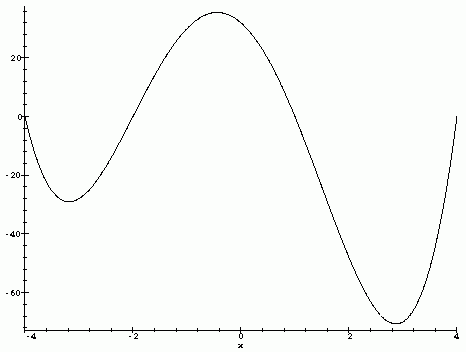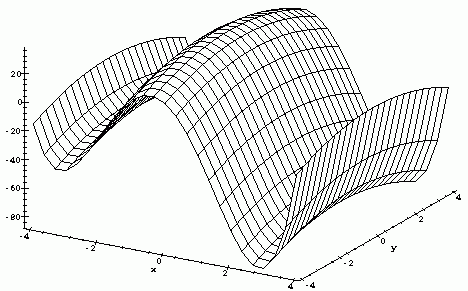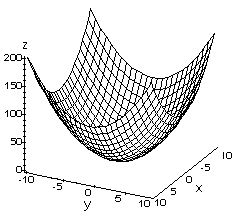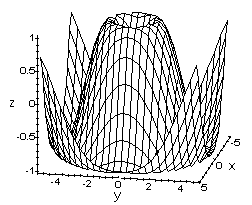
You are likely familiar with functions in one variable and their graphs. Given a value of x, y(x) returns the value of the function. Here x is the independent variable and y is the dependent variable. Here are some examples of functions of one variable that you have likely seen before:
A function of one variable can be represented by a simple graph. The horizontal axis corresponds to the independent variable and the vertical axis corresponds to the dependent variable. The value of the function corresponds to the height above the horizontal axis. The graph below is of the function f(x)=x^4+x^3-18x^2-16x+32.

A function of several variables has several independent
variables. An example is temperature on the earth's surface. Suppose
that we wish to describe the temperature at a particular instant in time.
Temperature depends on position. It takes two coordinates to represent
position on the earth's surface, longitude and latitude. Let the variables
x and y represent these quantities, respectively. Then we can define T(x,y)
to be the temperature function. Given x and y we can determine the
temperature. This is a function of 2 variables.
A function of 2
variables is represented graphically by a surface in
three-dimensional
space. For the temperature function above, a position on the earth's
surface is represented by a point in the xy-plane. The temperature at
that position is represented by the height of surface above the xy-plane.
The figure below plots the surface corresponding to the function
f(x,y)=x^4+x^3-18x^2-16x+32-y^2.

There are many examples of functions of several variables:
Below are graphs of some examples of functions of two variables. On the left is a graph of the function z=x^2+y^2 and on the right is a graph of the function z=sin(sqrt(x^2+y^2)).


It is difficult to completely represent a function of more than 2 variables graphically, since for a function of n variables, n+1 dimensional space is required.
[Vector Calculus Home] [Math 254 Home] [Math 255 Home] [Notation] [References]
Copyright © 1996 Department of Mathematics, Oregon State University
If you have questions or comments, don't hestitate to contact us.